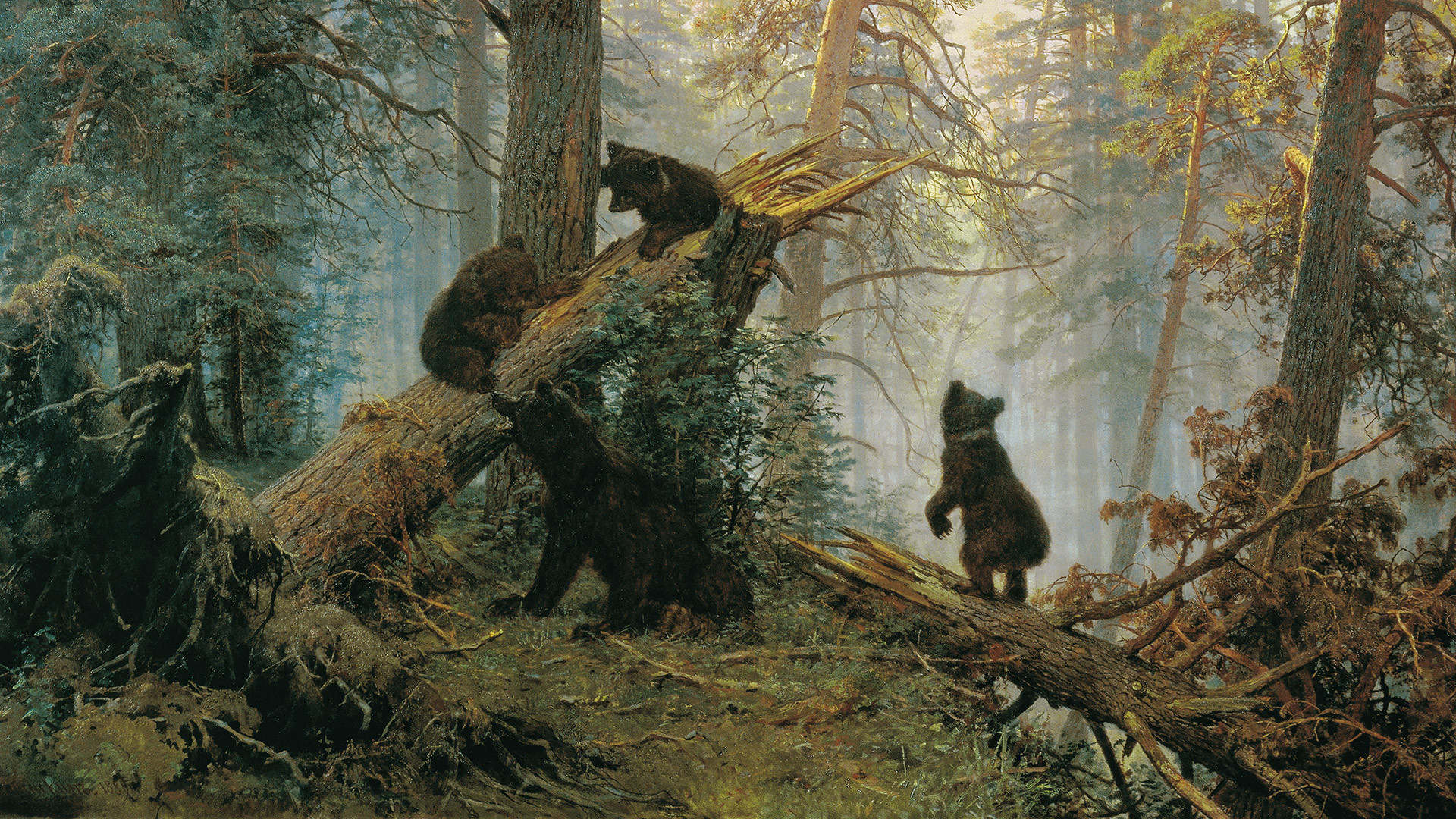
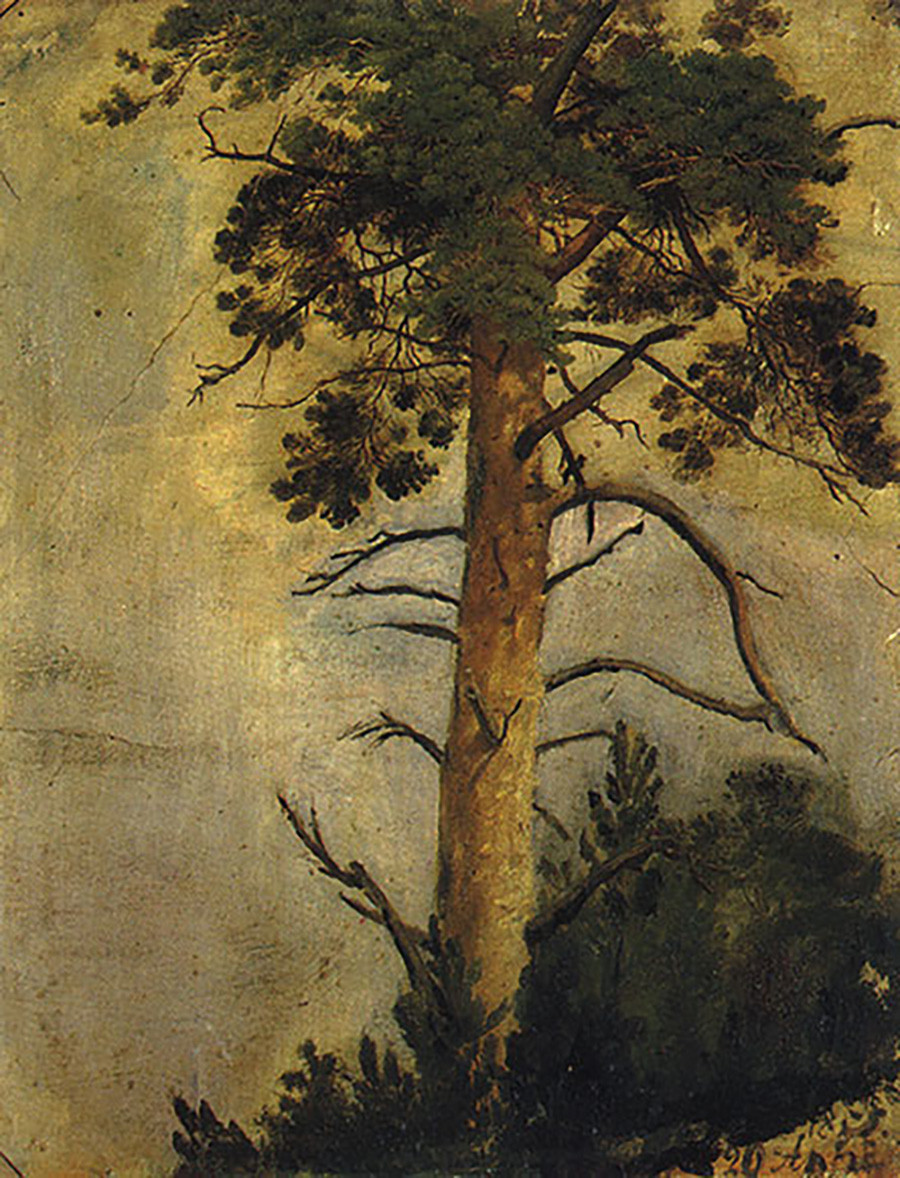
This sketch, which the artist made as a student of the Moscow School of Painting, Sculpture and Architecture, was acquired by the Russian Museum, the main repository of Russian art in St. Petersburg. Inspired by his success, Shishkin moved to that city, the then capital, and continued his studies at the Imperial Academy of Arts.
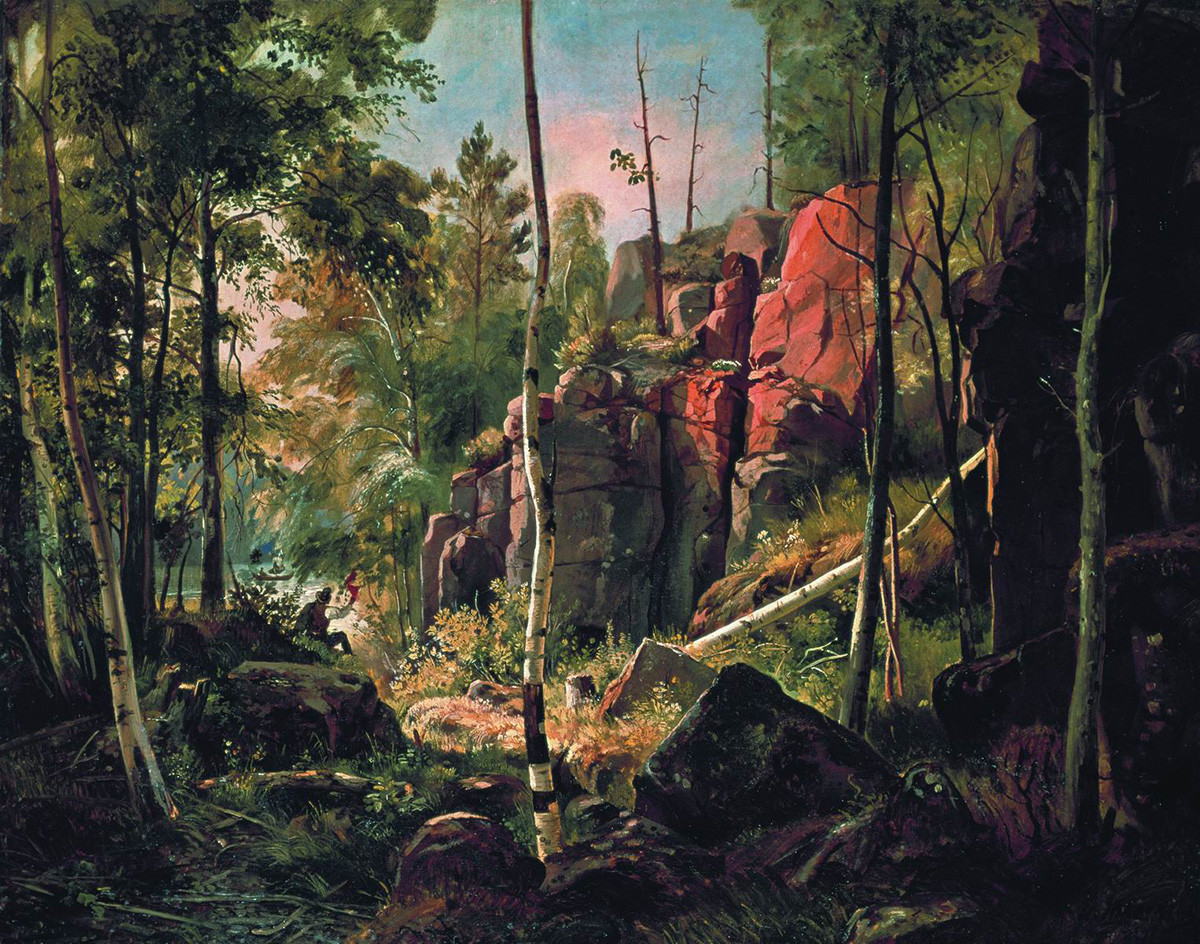
As a student, he journeyed endlessly through the rocky, forested landscapes of Karelia and painted from nature. For this painting in 1860, he received a gold medal from the Academy and a stipend for a trip to Europe.
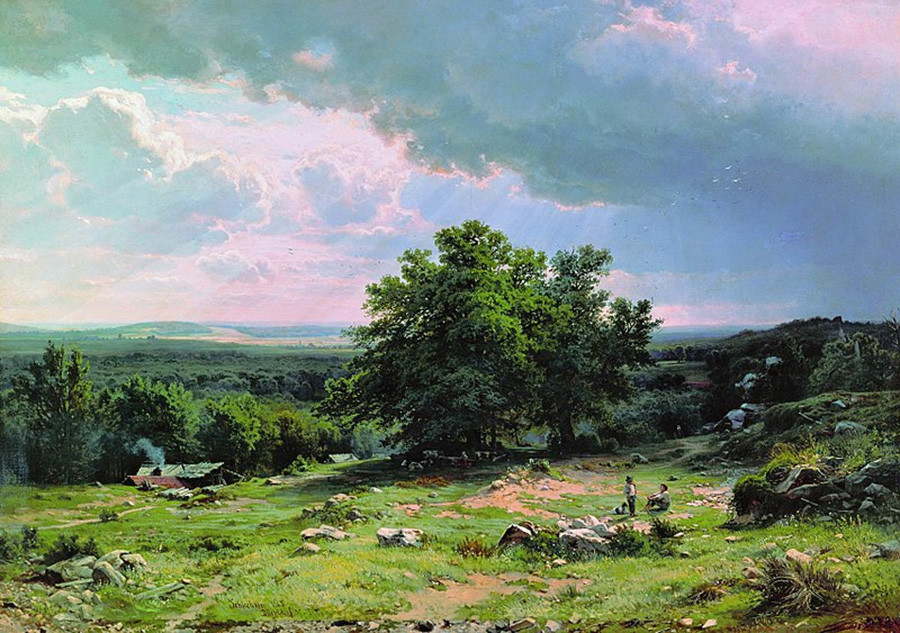
Shishkin painted this picture in Germany on a commission from collector Nikolai Bykov. As a result of this work, his St. Petersburg alma mater awarded him the title of academician. Pining for his native landscapes, the artist soon returned to Russia.

On one of his sketches for this canvas, Shishkin wrote: “Expanse, spaciousness, agricultural lands. Rye. God’s grace. Russia’s wealth.” Indeed, it is hard to imagine a landscape more kindred to the Russian soul. Shishkin absorbed the nature around his hometown of Yelabuga (now in the Republic of Tatarstan). The painting was displayed at an exhibition of the Itinerants, where it was bought by Pavel Tretyakov.
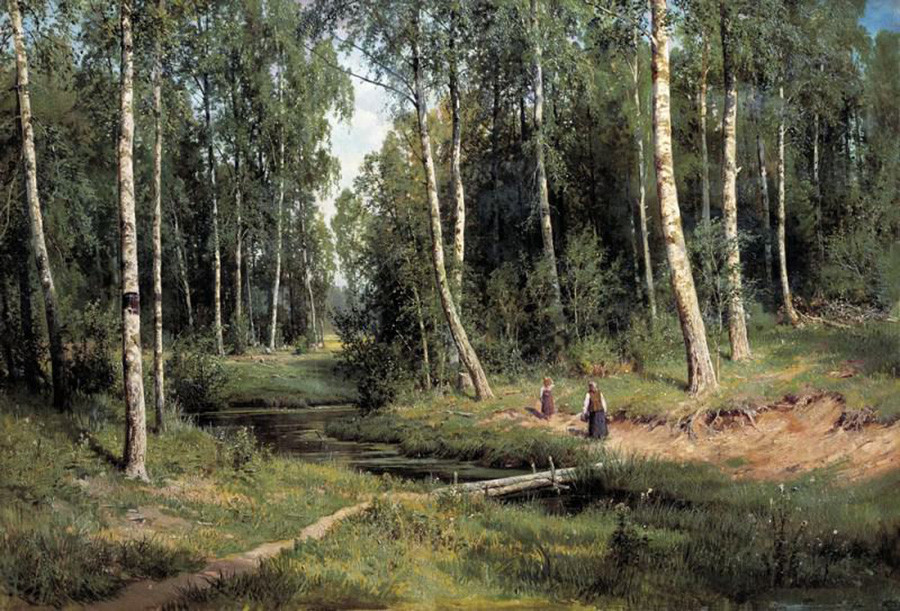
Shishkin remained in close contact with the Itinerant artists, who championed realism and folk subjects, and he often took part in their traveling art exhibitions. His close friend Ivan Kramskoy, who painted several portraits of Shishkin, said of his colleague as a landscape painter, "...he is far above all others put together..."
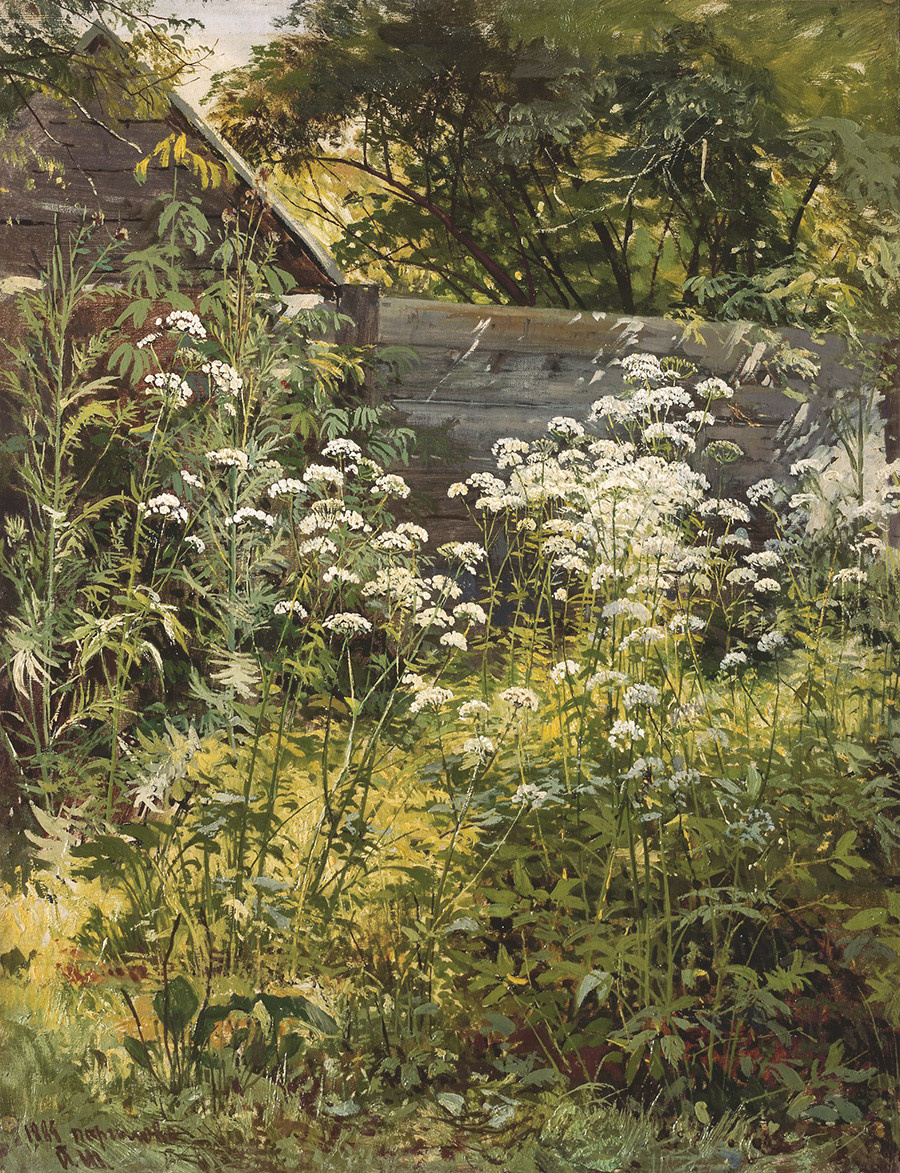
The Dusseldorf school of painting instilled in Shishkin a special love for the earthy, unadorned side of nature. His sketches resembling fragments of pictures are nevertheless highly detailed and count as standalone works.
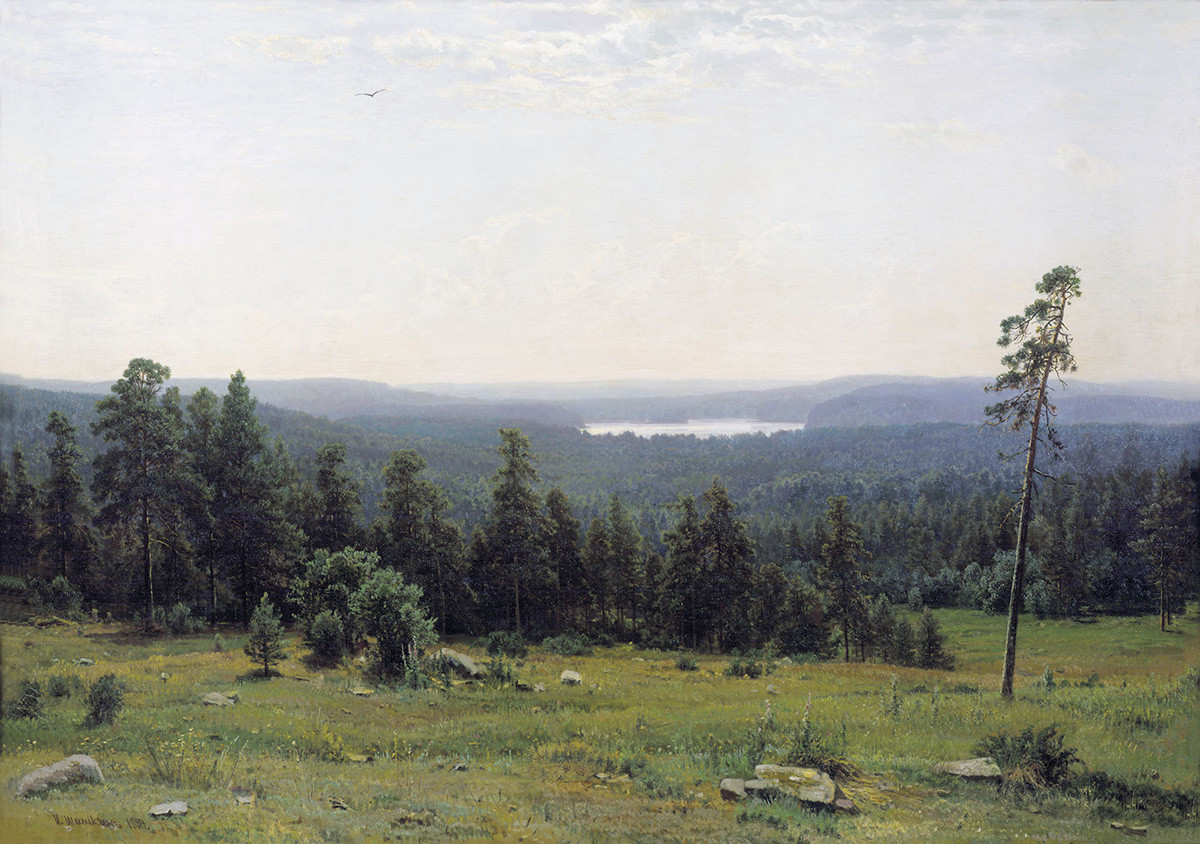
Shishkin was already a workaholic, but domestic tragedy plunged him ever deeper into his occupation. First, his wife, the mother of his children, passed away. Then, having married a second time, he experienced the same agonizing loss.
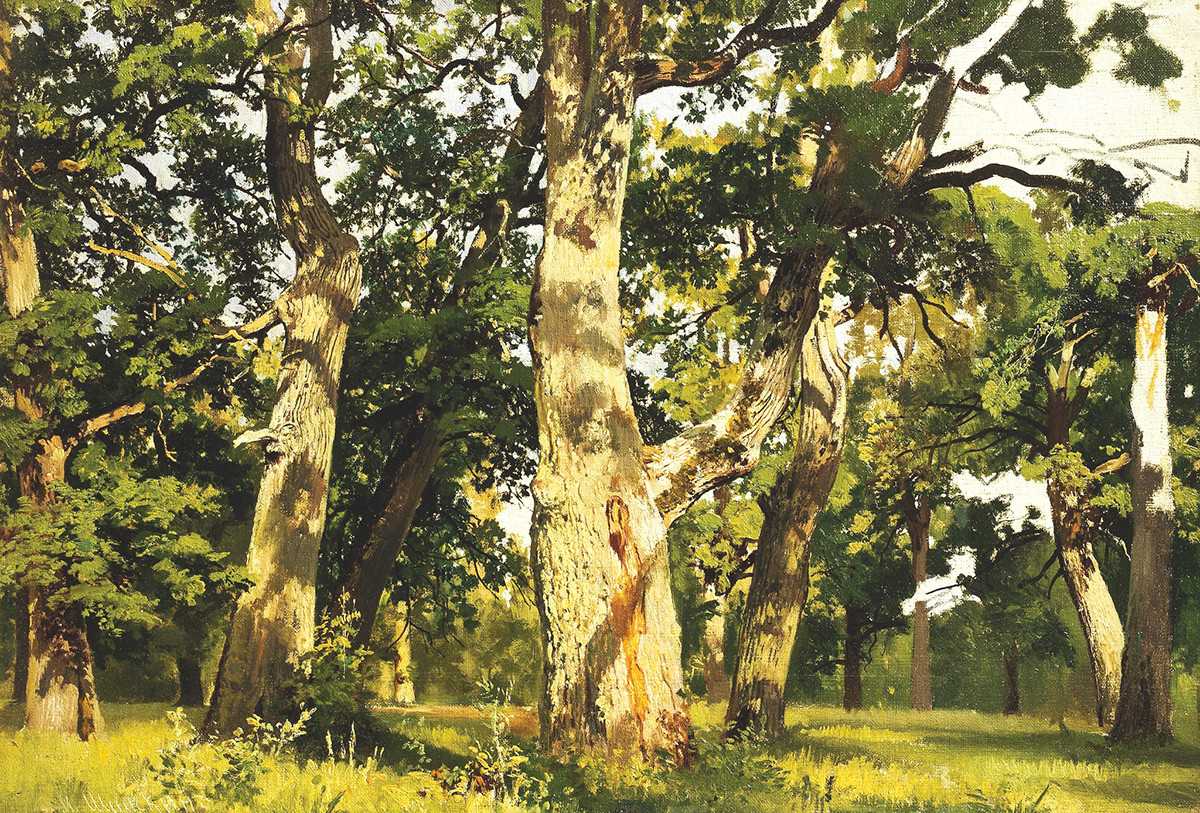
Shishkin's paintings of the 1880s show how his artistry was still developing. Although already recognized as a master painter, he never ceased his study of nature. “In artistic endeavor, in the study of nature, you can never close the book, you can never say that you have mastered it thoroughly and there is nothing more to learn,” he wrote.
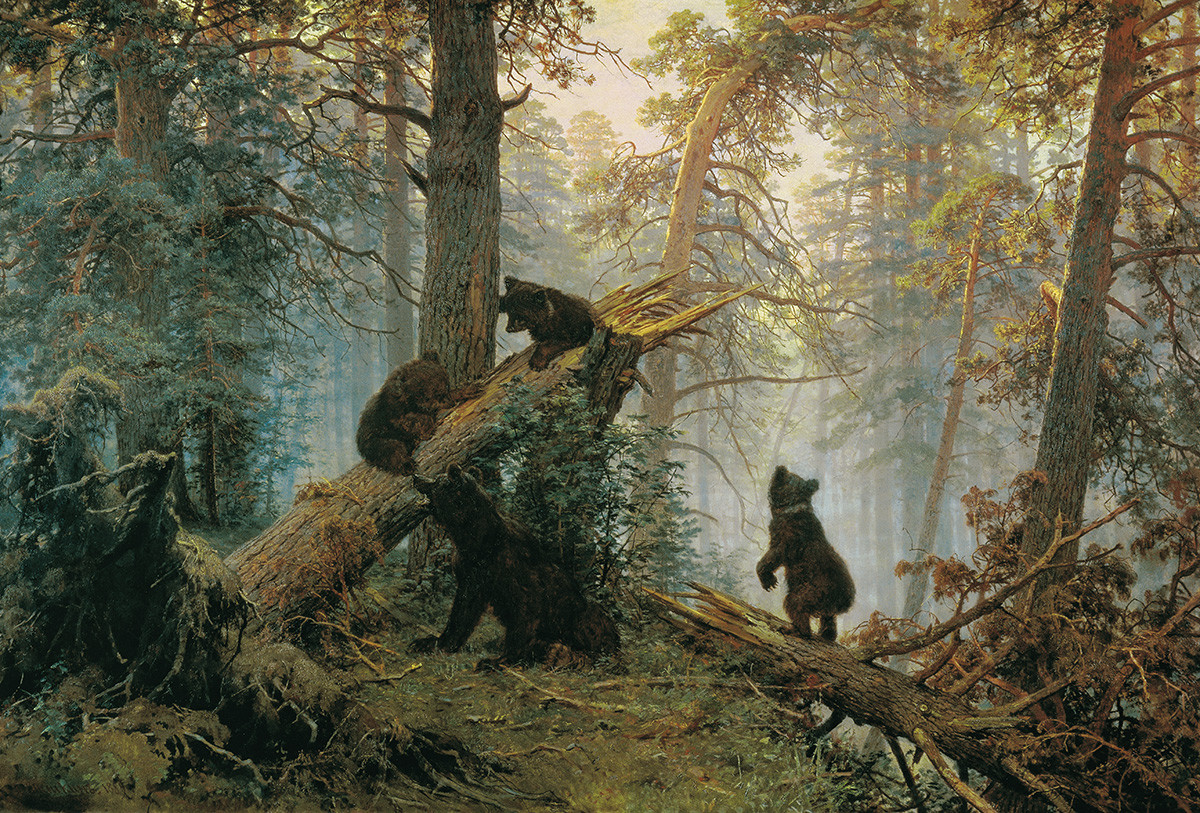
By far his most famous painting. The work was cordially received by contemporaries, and the famous collector Pavel Tretyakov purchased it for his Moscow gallery. In the Soviet Union (and today), the picture was replicated on the wrapper of a favorite candy, so every Russian knows and loves it.

Shishkin rarely painted winter themes, preferring a riot of green. Even on this near monochrome canvas, which appears gloomy at first glance, one of the main details is the blue sky.
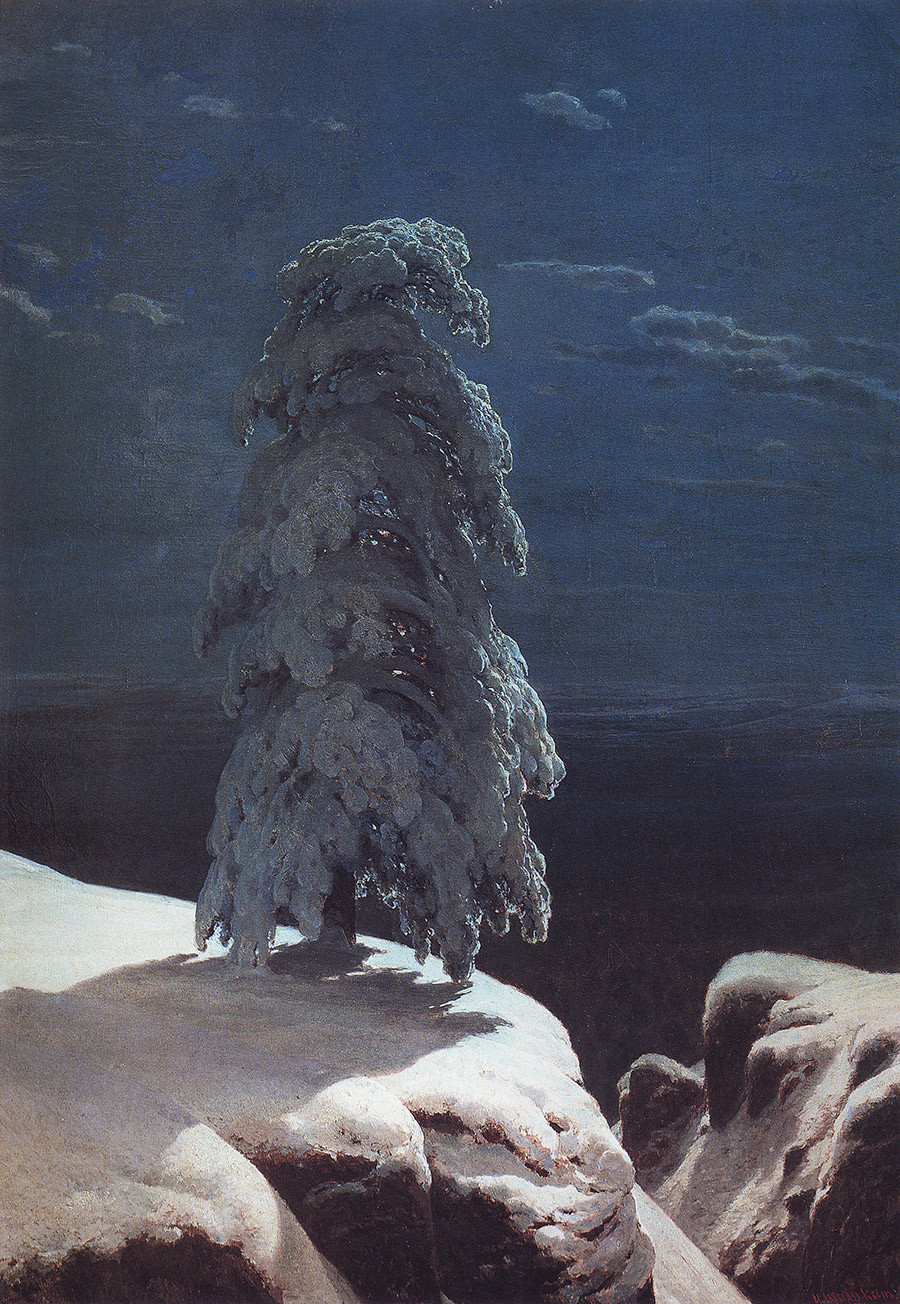
This picture is the embodiment of Russian literary romanticism on canvas. It is named after a work by romantic poet Mikhail Lermontov, for which it served as an illustration: In the wild north, there stands alone / A pine tree atop a bare peak...
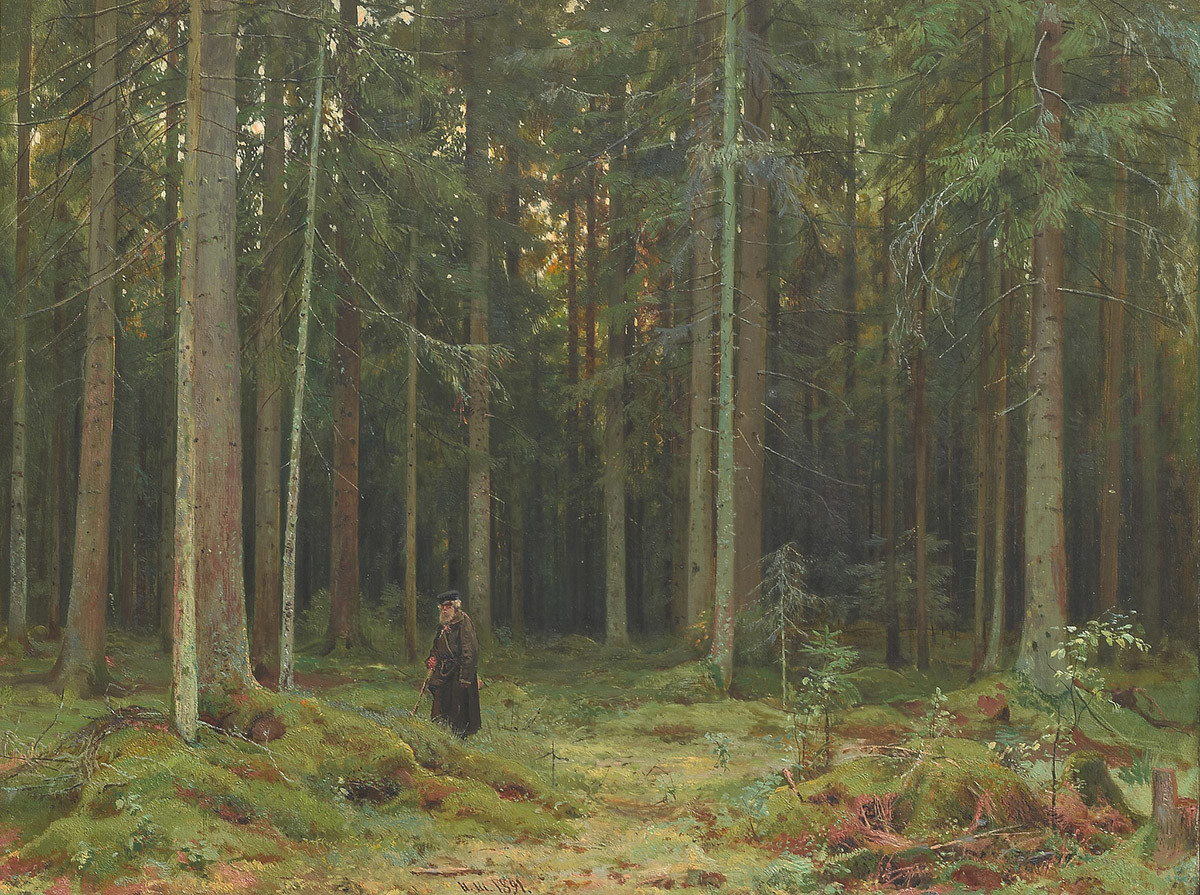
In 1892, the now Honorary Professor Shishkin was invited to give a landscape painting workshop at the Imperial Academy of Arts.
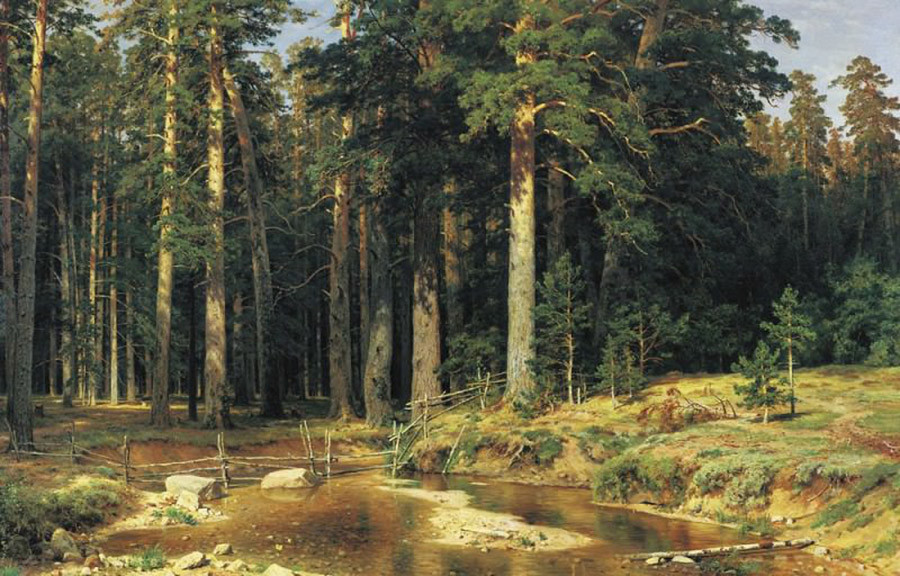
Just six years later, he died right at his easel. In this, one of his last pictures, Shishkin deploys his favorite “treetop cropping” technique. Thus, the forest seems even more spacious, inviting the viewer to step inside.
If using any of Russia Beyond's content, partly or in full, always provide an active hyperlink to the original material.
Subscribe
to our newsletter!
Get the week's best stories straight to your inbox